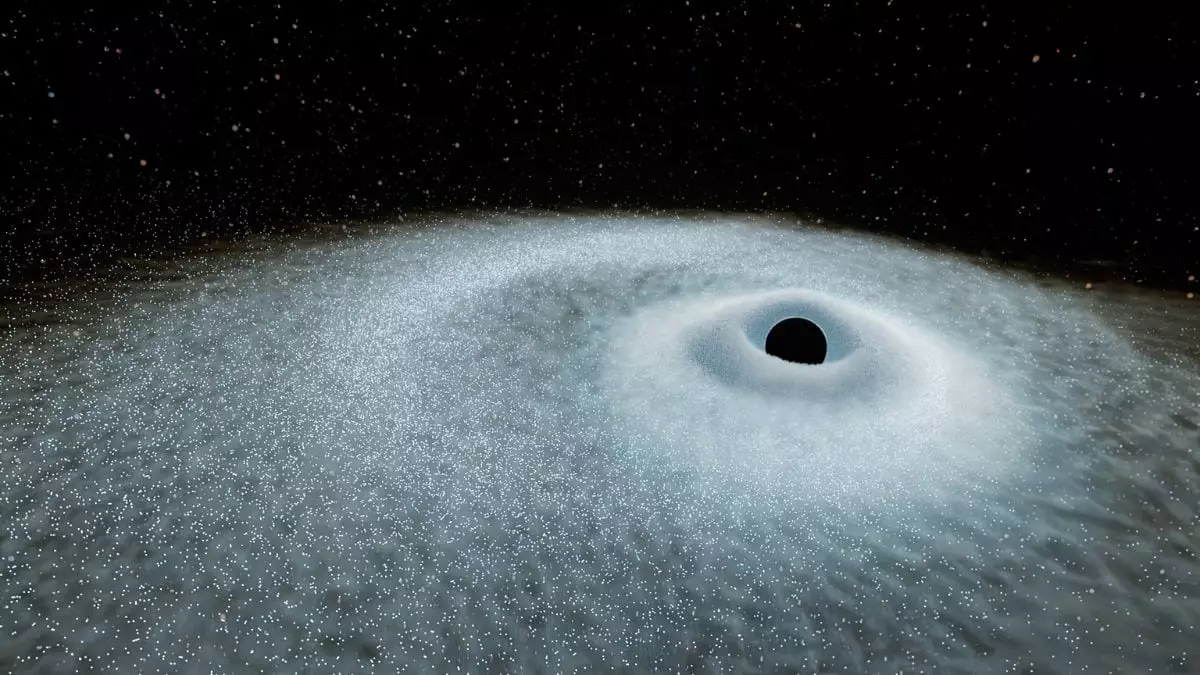The cosmos is full of mysteries, but perhaps none are as astonishing as the recent discovery of Extreme Nuclear Transients (ENTs). These colossal explosions occur when massive stars—those at least three times the mass of our Sun—meet their demise at the hands of supermassive black holes. While the phenomenon of tidal disruption events has been known for quite some time, this new class of explosive events cranks the intensity up to a staggering level, shedding more light on the dynamics of black holes and the energy mechanisms at play in the universe’s most taxing environments.
Flares that Redefine Cataclysmic Insights
Astronomers have observed flares emanating from galactic centers that are nearly ten times more energetic than typical tidal disruption events. This finding, led by researcher Jason Hinkle from the University of Hawaii’s Institute for Astronomy, emerged from observations made by the European Space Agency’s Gaia spacecraft in 2016 and 2018, and further substantiated by a third flare detected by the Zwicky Transient Facility in 2020. The brightness of these flares eclipses even that of supernovae and lasts significantly longer than the fleeting bursts generally associated with stellar destruction.
The significance of ENTs stretches far beyond a mere numerical increase in brightness; they present an unprecedented opportunity for astronomers to peer deeper into the feeding habits of black holes, especially those dating back to the earlier epochs of our universe. It is a fundamental leap forward, revealing not only how these black holes have evolved but also enhancing our understanding of cosmic history.
Quasi-Perpetual Cataclysms
Compared to the traditional supernova, ENTs operate on a scale of devastation that is profoundly greater—over 100 times the intensity of a supernova. What is even more bewildering is that these extreme eruptions have been taking place over millions to billions of years, leading us to ponder the ongoing and tumultuous dance between black holes and the massive stars that fall into their grasp.
Given their long duration, ENTs could act as beacons for future explorations in astrophysics. The typical explosive yet brief nature of other events doesn’t provide nearly as rich a dataset as these long-lived flares, thereby offering scientists a unique lens through which to study the intricate mechanics of energy applications across galaxies.
Redefining Understanding of Cosmic Dynamics
Ultimately, the discovery of ENTs challenges existing models within astrophysics and could revolutionize how we perceive the interactions between black holes and stars. They shine like rare jewels amidst the vast tapestry of the universe, illuminating the complex processes that govern cosmic evolution.
As we stand on the precipice of technological advancements that promise even better observational capabilities, the potential for discovering more ENTs adds a thrilling layer of urgency to ongoing astrophysical research. With each new flare brings the tantalizing chance to reframe our understanding of gravity, energy, and the very fabric of existence in our universe, thus evoking a sense of both awe and responsibility as we approach these profound celestial events.


Leave a Reply